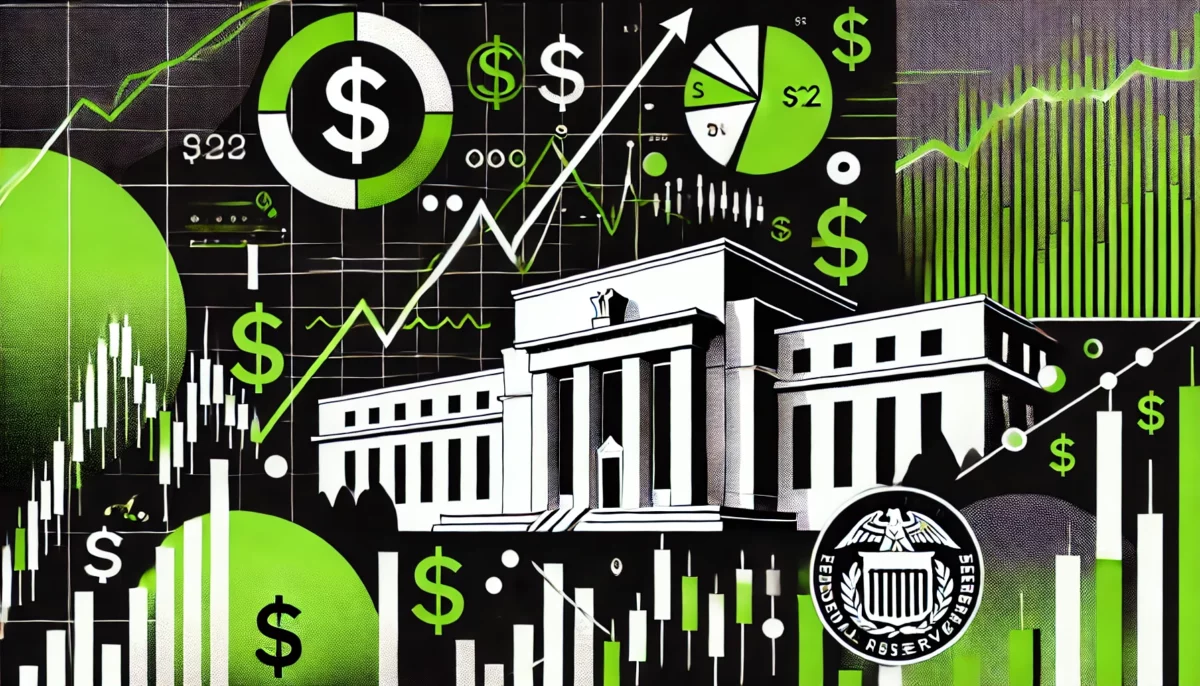- Key economic reports, providing insights into the state of the U.S. economy, will be released this week.
- The interplay between U.S. GDP, S&P Global Manufacturing PMI, the PCE Price Index reports, and the crypto market reveals the nature of the modern investment market.
As the United States nears the implementation of President Donald Trump’s reciprocal tariff plan on April 2, investors are bracing for a pivotal week filled with key economic reports. These reports will offer insights into the nation’s economic health, influencing both traditional markets and alternative assets like cryptocurrencies. Given that crypto markets are highly sensitive to macroeconomic trends, price fluctuations are likely as investors react to shifting economic conditions.
S&P Global Manufacturing PMI
The week kicks off with the preliminary release of the S&P Global Manufacturing Purchasing Managers’ Index (PMI) for March. This indicator measures the performance of the manufacturing sector, with a reading above 50 signaling expansion and a reading below 50 indicating contraction.
A strong PMI report could boost investor confidence, potentially leading to gains in both the stock and crypto markets. For example, in November 2024, the S&P Global U.S. Manufacturing PMI was revised upward to 49.7 from a preliminary 48.8, suggesting a near stabilization in the manufacturing sector. During the same period, the crypto market maintained a bullish stance, reflecting how positive economic signals can support risk appetite across different asset classes.
New Home Sales
On Tuesday, the U.S. will release new home sales data for February, offering insight into the housing market and consumer purchasing power. Strong home sales often signal a robust economy, boosting investor confidence across stocks and cryptocurrencies.
In January, the U.S. recorded a seasonally adjusted annual rate of 657,000 new single-family home sales, marking a 10.5% decline from the revised December rate of 734,000 and a 1.1% drop compared to January 2024. Interestingly, studies suggest a connection between large crypto withdrawals (exceeding $5,000) and real estate purchases, indicating that investors convert digital assets into traditional assets like homes.
CB Consumer Confidence Index
Also, on March 26, the Conference Board (CB) will release its Consumer Confidence Index (CCI) for March, providing data on consumer optimism or pessimism, which directly influences spending behavior. Higher consumer confidence typically correlates with increased consumer spending, which boosts economic activity and supports the stock market, while a decline may indicate caution among consumers and weaker market performance.
In February, the CCI experienced a significant drop of 7.0 points, falling to 98.3, signaling growing economic concerns. During the same period, Bitcoin’s price fell below $90,000, as investors reacted to heightened economic uncertainties, including proposed tariffs and persistent inflation concerns.
U.S. GDP Growth Rate
On Thursday, the final estimate of GDP growth for Q4 2024 will be released. As a broad indicator of economic activity, an upward revision in GDP will boost confidence in traditional markets, supporting equities and strengthening the U.S. dollar.
Conversely, a downward adjustment could signal slowing economic momentum, prompting caution among investors and increasing speculation about potential Federal Reserve policy shifts. In Q4 2024, the U.S. economy expanded at an annual rate of 2.3%, marking a deceleration from the 3.1% growth observed in Q3 2024. This slowdown suggests a moderating economic landscape, which could impact investor expectations for future interest rate decisions.
PCE Price Index
The week concludes with the Personal Consumption Expenditures (PCE) Price Index for February, set to be released on Friday. As the Federal Reserve’s preferred inflation metric, the PCE index plays a role in shaping monetary policy.
Higher-than-expected inflation could reinforce the need for tighter monetary policy, leading to market volatility while a decline in inflation may increase expectations of potential interest rate cuts, providing a boost to risk assets. In January, the PCE Price Index rose by 2.5% year-over-year, slightly lower than December 2024’s 2.6% increase. This moderation suggests a gradual easing of inflationary pressures, though the upcoming February data will be watched to assess whether this trend continues.


